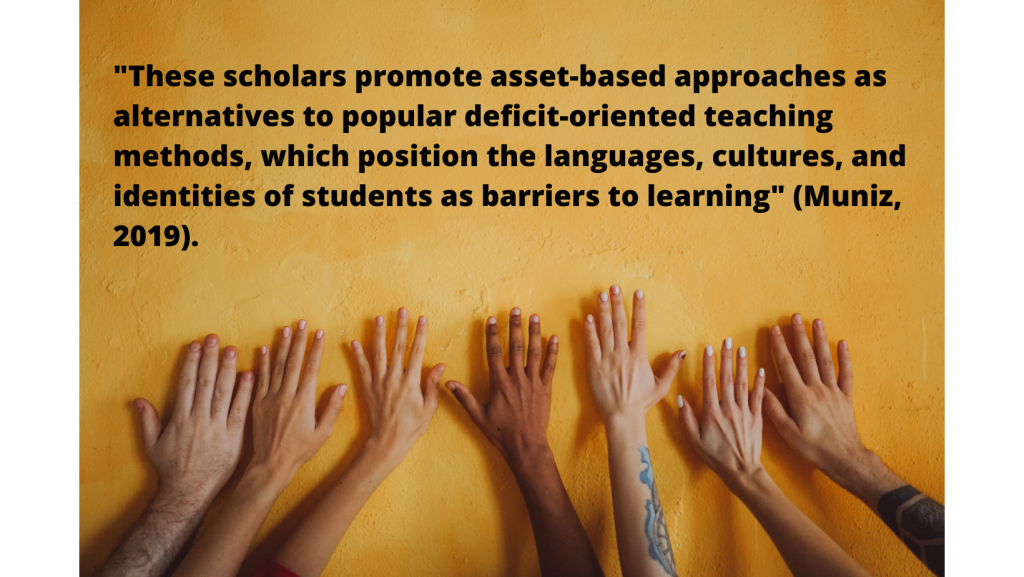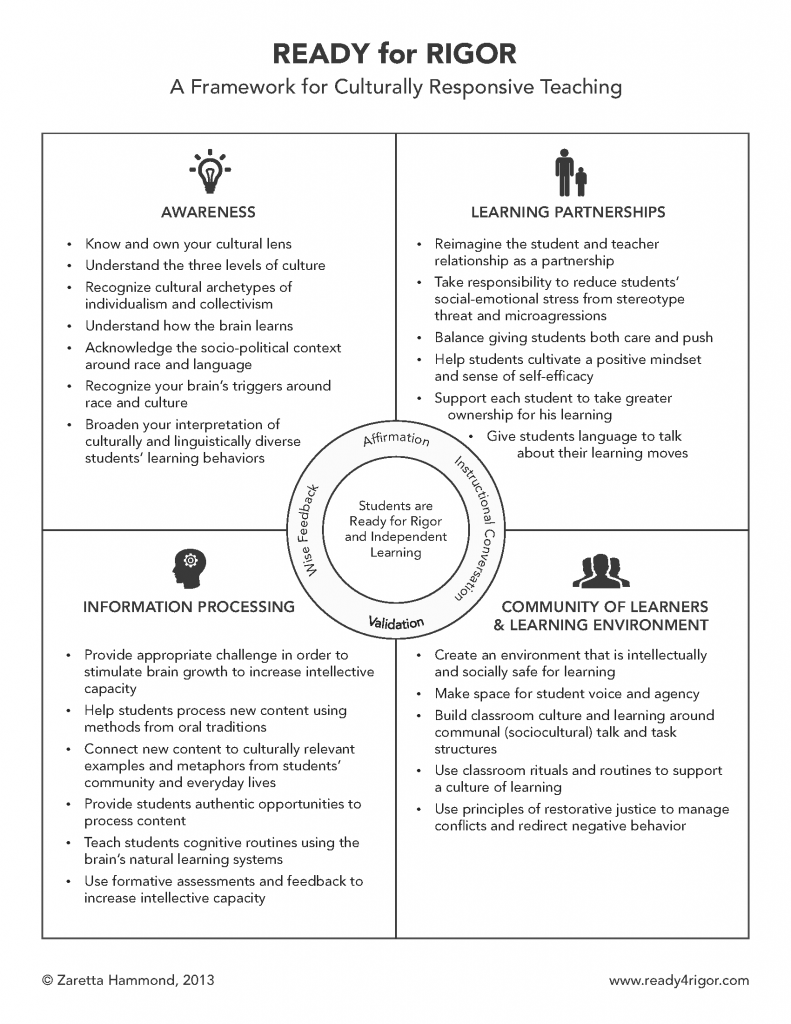1 Culturally Responsive Teaching: An Introduction
Welcome
Welcome to the Culturally Responsive Teaching course. We are delighted to have you join us as we work together to become more culturally responsive practitioners.
There are three modules in this course that will help you learn about the importance of culturally responsive teaching and reflect on your own background and teaching practice. As we go through the course, we’ll develop action plans for increasing inclusion in our classes.
In this first module, we’ll focus on self-reflection, the demographics of our students, and work together to develop diversity and inclusion statements.
The objectives of the first module are:
- participants will describe the importance of culturally responsive teaching and its impact on student learning outcomes
- participants will construct a self-identity map and investigate how your identity intersects with students’ identities and impacts learning outcomes
- participants will critique several diversity and inclusion statements and determine which aspects resonate with them and their students
The Importance and Impact of Culturally Responsive Teaching
As we begin our exploration of culturally responsive teaching, let’s take a look at the impact these practices have on students and their communities. Watch the video below to learn how students feel about these practices in their own words. Though the video describes the impact of these practices in a K-12 context, it is still applicable for higher education.
What is Culturally Responsive Teaching?
Culturally Responsive Teaching has its roots in culturally relevant pedagogy, a concept developed by Gloria Ladson-Billings “to describe a form of teaching that calls for engaging learners who experiences and cultures are traditionally excluded from mainstream settings” (Muniz, 2019). Geneva Gay developed this concept to focus on strategies for teaching and developed the term culturally responsive teaching. Culturally responsive teaching focuses on “using the cultural knowledge, prior experiences, frames of reference, and performance styles of ethnically diverse students to make learning encounters more relevant to and effective for them” (Gay, 2010). With Culturally sustaining pedagogy, a concept developed by Django Paris, “educators help students develop a positive cultural identity”, wherein “educators not only draw on but also sustain students’ culture” (Muniz, 2019).

Zaretta Hammond, educator and author of Culturally Responsive Teaching and the Brain: Promoting Authentic Engagement and Rigor Among Culturally and Linguistically Diverse Students, offers a framework for culturally responsive teaching that centers around four key aspects: awareness, learning partnerships, information processing, and the community of learners and learning environment (Hammond, 2013).
Review the graph below to learn more about each of the four aspects of culturally responsive teaching.

Competencies for Culturally Responsive Teaching
There are eight competencies for culturally responsive teaching.
Click the plus signs in the graphic to learn more about each competency.
Image and text from Eight Competencies for Culturally Responsive Teaching [Graphic]. (2020) New America. https://www.newamerica.org/education-policy/reports/culturally-responsive-teaching/teacher-competencies-that-promote-culturally-responsive-teaching/
Reflection 1
One major aspect of culturally responsive teaching is establishing an environment in which students feel included.
This course is intended to help you build and strengthen your existing practice in their area. Respond to the prompt below to share how you are already engaging in this work. Click the checkmark in the lower right corner to submit your answer.
Summary
Thanks for sharing your reflections.
In this first section of our course, we’ve learned what culturally responsive teaching is. We’ve also learned the competencies of a culturally responsive educator. Click the continue Next button in the lower right corner to proceed to the next section and engage in a key competency: reflection.